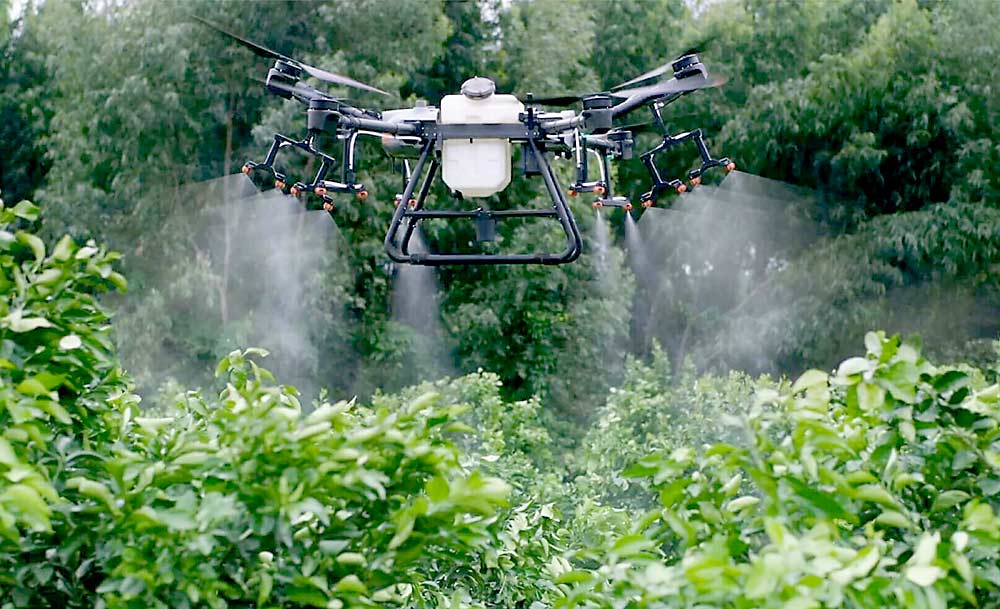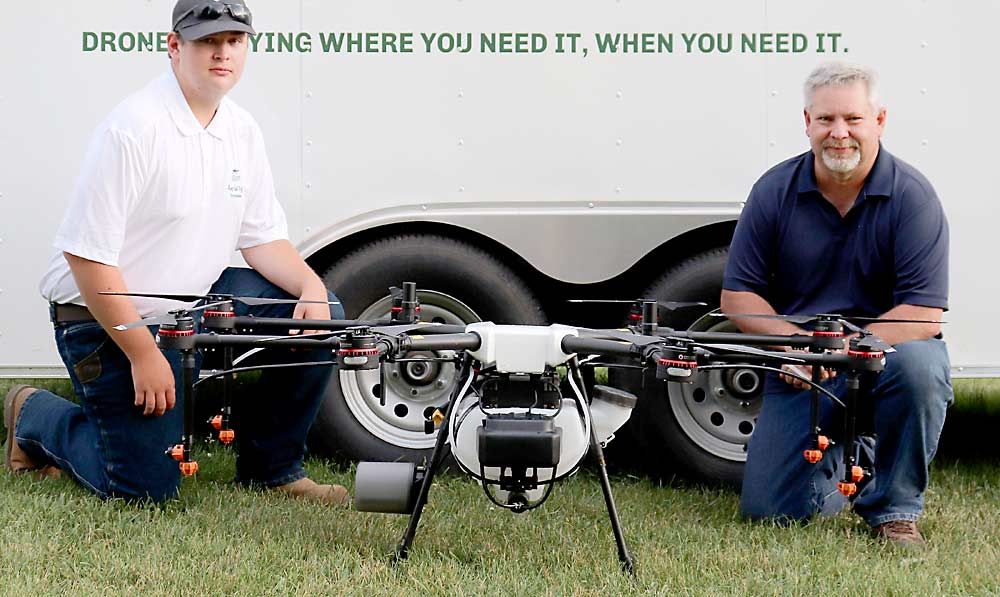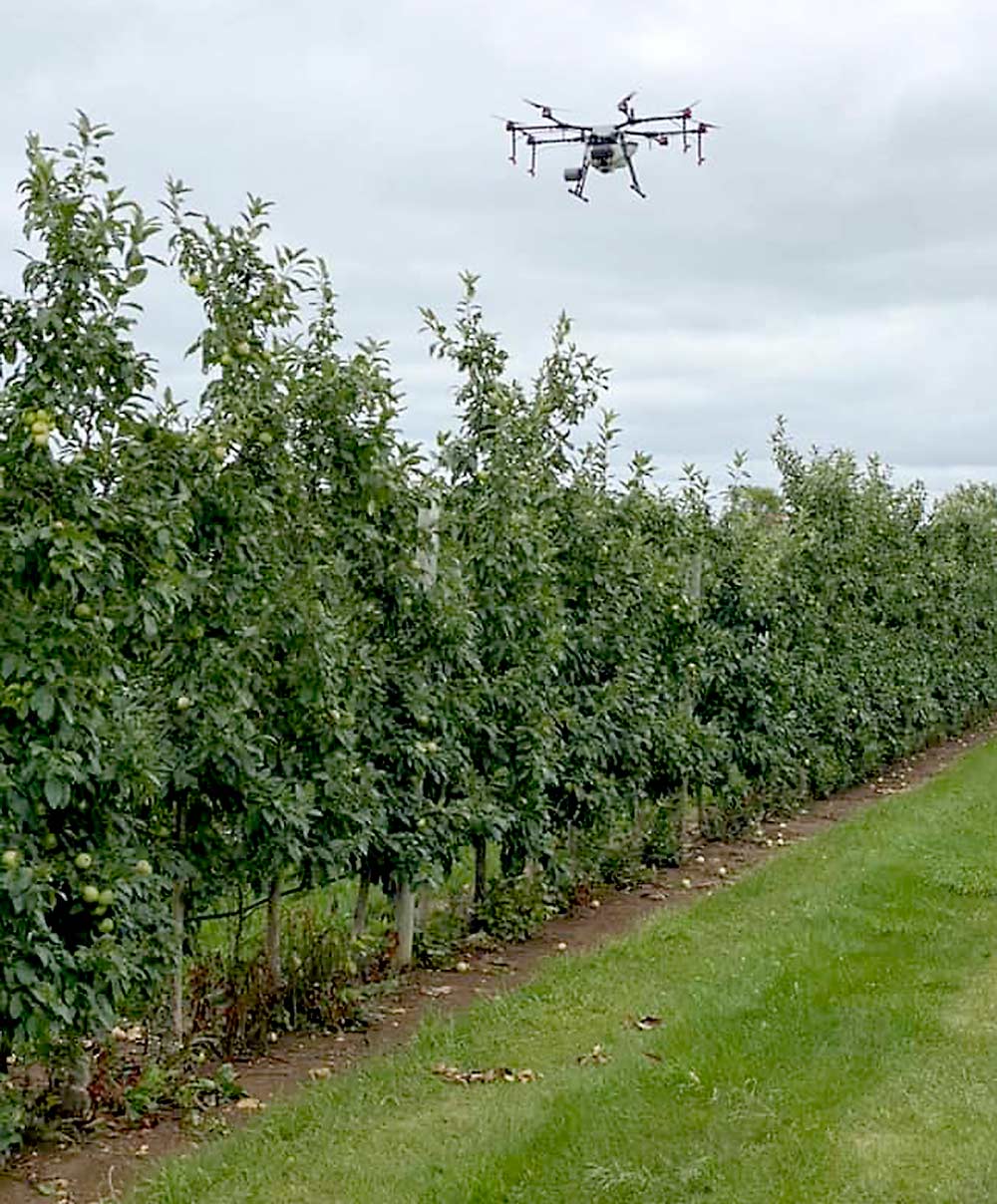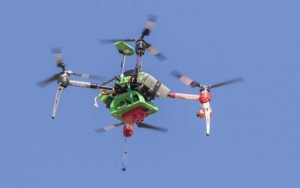
Drones can now be used to spray crops in Michigan. The state government approved the practice last summer.
Spraying pesticides via drone has potential in a lot of crops, including fruit. But the practice is new, and few in Michigan have done it. Mike Reinke, a Michigan State University integrated pest management educator for fruits and vegetables, is seeking funding to study the efficacy of drone spraying on specialty crops.
Reinke said fruit growers have been inquiring about using drones to spray pesticides, but, so far, the machines have only sprayed row crops in Michigan. There are lots of questions about effectiveness and where they might fit within fruit pest management programs, such as how they compare to airplanes or ground-based sprayers.
As of January, one company had met the state’s licensing requirements to spray crops with drones in Michigan, but other companies plan to seek certification, Reinke said.
Kirk Babcock, owner of Aerial Ag Technologies in Southwest Michigan, is an application services contractor for Rantizo, an Iowa company that’s licensed to use drones to spray crops in Michigan. Rantizo allows contractors such as AAT to spray under its name and license, he said.

Babcock said drones have been used for spraying pesticides overseas, but it’s a fairly new practice in the United States, especially for specialty crops.
Lav Khot, associate professor at Washington State University’s Center for Precision and Automated Agricultural Systems, said his team recently purchased a spraying drone and plans to explore applications in Washington state tree fruit and grapes.
In Michigan, Reinke and Babcock organized a drone demonstration for grape growers last year and plan to hold more fruit field days in 2022. They want to test drone spray coverage on fruit farms around the state.
Babcock said drones can spray with great precision, but they don’t cover a wide area. That might make them a natural fit for spraying specialty crops, however, which tend to grow on smaller plots and more uneven terrain than row crops. Small and nimble, they can get into spaces airplanes can’t reach, and they can spray with more precision. Drones also can get into muddy or obstructed areas that ground sprayers can’t reach, which could be really useful for growers with limited spray windows. They use less water and chemicals than ground sprayers, and the chance of operator exposure to pesticides is smaller, Babcock said.
The diversity of specialty crops can be a challenge, however. A particular drone setup may work for one crop but not necessarily another. Operators will have to map plots beforehand and come up with a specific flight plan for each, he said.

Other drone challenges include small batteries and spray tank sizes, which limit flight time, and the need to constantly keep up with advancing technologies that can improve performance but which can also be costly. Also, getting permission to operate is not easy. Spray-drone operators need multiple certifications to fly the machines and apply the pesticides. They also need insurance, Babcock said.
Babcock doesn’t expect drones to replace other spray tools, but to complement them. He said they’ll probably find a niche between airplane-based spraying and ground-based spraying. Nozzles on the bottom of the drone release the spray, and the drone’s propellors push the spray down onto the canopy — much like an airblast sprayer, but from above.
“We like to call it an airblast sprayer that flies right above the area you want it,” he said.
Babcock considers the potential of drone spraying to be almost unlimited. They can spray insecticides, fungicides, herbicides, nutrients, plant growth regulators — any sort of liquid a grower would normally spray.
“The future is only limited to our imagination,” Babcock said.
The drones can spray 5 to 10 acres of vineyard per hour. Tree fruit orchards, with their tall trees and big canopies, pose more of a challenge and might require more passes to spray at all the proper angles, he said.
Babcock charges $150 an hour for his spraying services. For growers who want to better learn where a drone might fit in their spraying program, before diving in, he recommended they set aside a certain amount of acreage for trials.
“I’m pretty sure they’ll be happy with the outcome,” he said.
—by Matt Milkovich







Leave A Comment